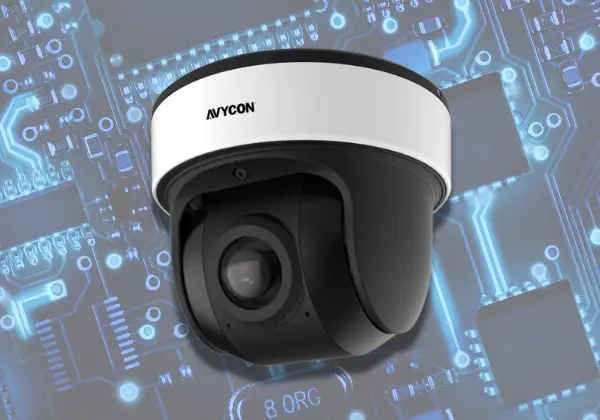Wireless security cameras have gained significant popularity because of their ease of installation and flexibility in placement. They provide an effective solution for monitoring homes, businesses, and various other environments without the need for extensive wiring.
But how exactly do these cameras work? This blog post will discuss “how wireless security cameras work” and we will cover their features, signal types, and compare them to hardwired systems.

Key Components of a Wireless Security System
Understanding the key components of a wireless security system is essential to grasping how these cameras function. A typical wireless security system includes the following:
The Camera
The camera is the heart of the security system. It captures video footage of the monitored area. Modern wireless security cameras often come with high-resolution capabilities, night vision, and motion detection. These features enable the cameras to capture clear video footage in various lighting conditions and detect any unusual activity.
The Transmitter
The transmitter is attached to the camera and is responsible for sending the video feed wirelessly. Many wireless cameras today use Wi-Fi, but some may also use Bluetooth or other wireless protocols.
The Receiver
The receiver is usually connected to a monitor or recording device. It receives the signal from the camera and converts it into video footage. This component ensures that the captured footage is accessible for real-time viewing or recording.
The Monitor
The monitor shows the footage received from the receiver. This can be a computer, a smartphone, or a dedicated monitor. It allows users to view the footage in real-time, enabling them to monitor their property from anywhere.
The Recording, Management, or Storage Device
The captured footage needs to be stored for future reference. You can do this using a DVR (Digital Video Recorder), an NVR (Network Video Recorder), or cloud storage. Each of these options has its own advantages in terms of storage capacity, accessibility, and security.
How Wireless Security Cameras Work
When a wireless security camera captures footage, the transmitter sends this data wirelessly after compressing it.
The receiver connects to a device or monitor. It receives compressed data and then decompresses it. Finally, it turns the data into a watchable video.
Wireless security cameras work by capturing footage, displaying it on a monitor, and storing it for later use.
Capturing and Transmitting Footage
Once the camera captures the footage, the transmitter compresses this data and sends it wirelessly. The type of signal used for this transmission can vary:
Radio Frequency (RF) Signals
Many wireless security cameras use radio frequencies to transmit video and audio signals. 2.4 GHz and 5 GHz are the most popular frequency ranges. These ranges are similar to the ones used by Wi-Fi routers. RF signals are good for short to medium distances and can go through walls and obstacles. Interference from other devices on the same frequency may impact their range and quality.
Wi-Fi Signals
Wi-Fi is the most common way for modern wireless security cameras to send info. The camera connects to a Wi-Fi network and transmits the captured footage over this connection. This method allows for remote access, meaning you can view the footage from anywhere with an internet connection. Wi-Fi cameras are convenient for their ease of setup and flexibility in placement.
Cellular Networks
Some wireless security cameras support the use of cellular networks for data transmission. This is especially helpful in places where Wi-Fi might not work or be available. These cameras use mobile data to send videos to a cloud server or receiver, giving more flexibility.
Receiving and Displaying Footage
The receiver, connected to a recording device or monitor, receives the compressed data from the transmitter. Then, it decompresses the data and turns it back into video that can be watched. You can display this footage on a monitor for real-time viewing or store it on a recording device for future reference.
Wireless or Hardwired?
While wireless security systems offer convenience, they may not be the best choice for every situation. It takes more work to set up a hardwired security camera system, but they often work better than wireless systems in a number of important ways.
Greater Reliability
Hardwired systems don’t face signal interference or loss, a common problem with wireless systems. Their direct connection guarantees a steady and reliable data stream, ensuring continuous security coverage.
Higher-Quality Video
Hardwired systems can handle higher-resolution cameras without compressing video data, resulting in better video quality. This is crucial when identifying details in footage, such as faces or license plate numbers.
Scalability
Hardwired systems are usually easier to expand, which makes them a great choice for businesses or homes with a lot of space. They can handle more cameras without issues like Wi-Fi congestion or signal weakening. Wireless systems may encounter these problems when too many devices are connected.
Enhanced Security
Wireless cameras transmit data over Wi-Fi, making them vulnerable to hacking. Hardwired systems offer more security because you need physical access to tamper with the data.
Lower Maintenance
Hardwired systems typically require less maintenance than wireless ones. They don’t need batteries or have signal problems that need fixing.
CAM Security Surveillance and Your Camera System
When choosing between wireless and hardwired security systems, think about your property, security needs, and plans. Wireless security cameras are convenient and give you more options, but hardwired systems are more reliable, safe, scalable, and can send high-quality video.
At CAM Security Surveillance, we offer both wireless and hardwired systems. Our team is ready to help you find the best option for your home or business. Fill out the form on our website to set up a free site poll.
Wireless security cameras record video and send it wirelessly to a receiver. You can display or save the footage for later viewing. Knowing how these systems work can help you choose the right security solution for you. Choosing between wireless cameras or hardwired systems is important for keeping your property safe and secure.








